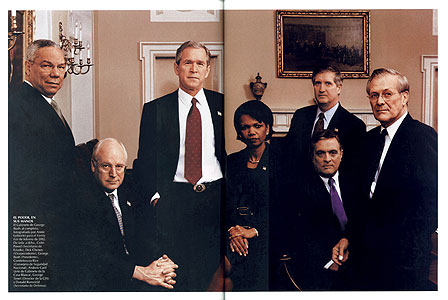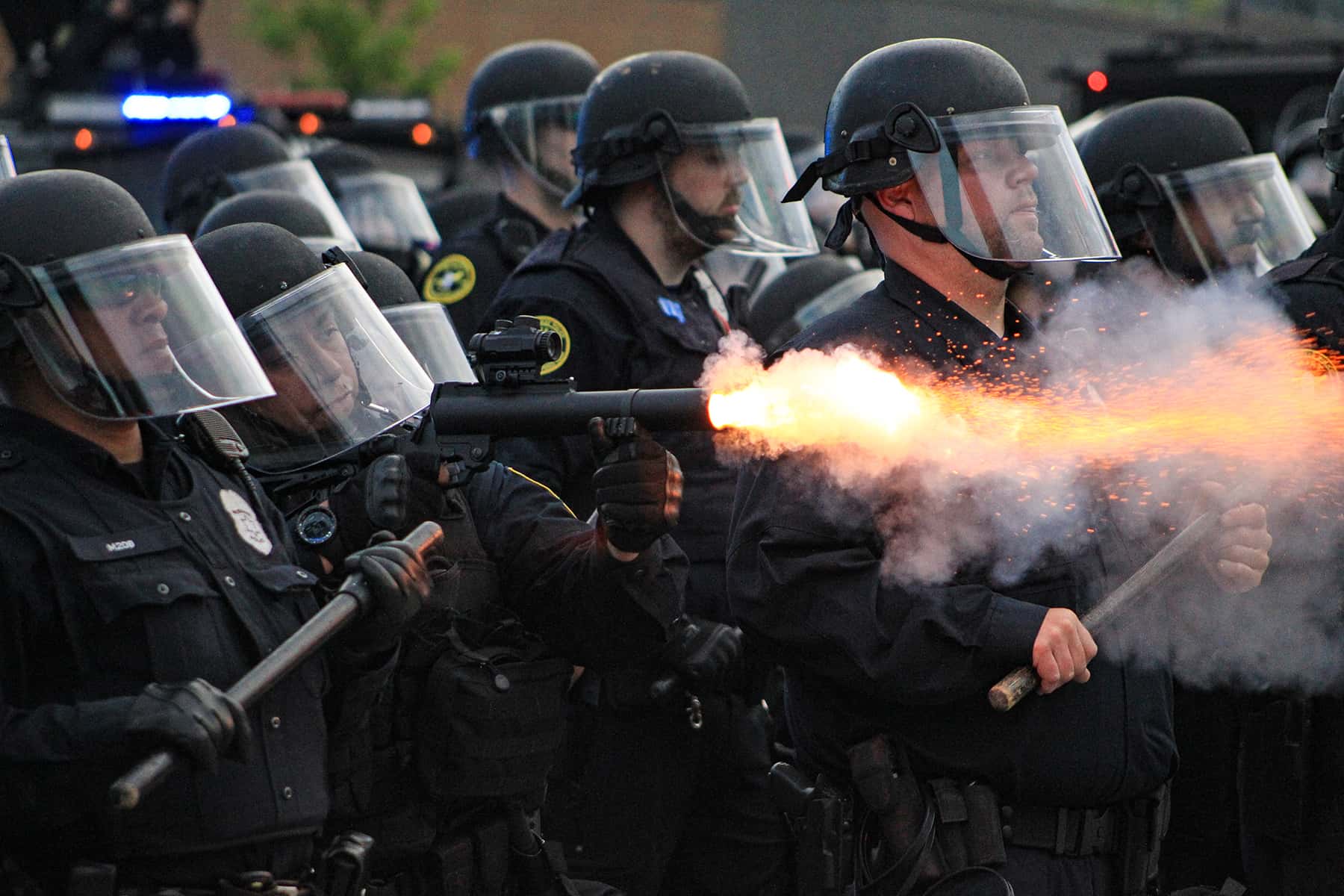Who Lost Afghanistan? H.R.

Congress, the media and many voters are asking military officials this week: how did we lose the Afghan war? I’ve been reading a book, “The Afghanistan Papers,” by Washington Post reporter Craig Whitlock, that shows how America messed up its longest war. (Every now and then, corporate media hypes something that’s actually worth reading.)
What it does not show, and what Pentagon leaders don’t seem to understand, is why.
Whitlock’s book reads like a synopsis of the many essays, books and cartoons I produced over 20 years, which were rejected by most newspapers and news websites because editors and producers refused to publish content that criticized the war.
For instance, Whitlock echoes my longstanding insistence that the Taliban posed no threat to the United States: “The Bush administration made another basic mistake by blurring the lines between Al Qaeda and the Taliban,” he writes. “The two groups shared an extremist religious ideology and a mutual support pact, but pursued different goals and objectives. Al Qaeda was primarily a network of Arabs, not Afghans, with a global presence and outlook… In contrast, the Taliban’s preoccupations were entirely local… The Taliban protected bin Laden and built a strong alliance with Al Qaeda but Afghans did not play a role in the 9/11 hijackings and there is no evidence they had advance knowledge of the attacks.”
We spent 20 years fighting people who meant us no harm and couldn’t have hurt us even if they had wanted to.
While the after-action investigation is necessary and interesting — I’m following it every day — the postmortem necessarily focuses on acts of commission and omission during the war, after it started. Perhaps because both major political parties were equally complicit in the invasion as a knee-jerk response to 9/11, or because both the Democrats and the Republicans are in the pockets of the defense industry, no one is questioning the decision to start the war, only its atrocious execution and embarrassing wind-down.
The sad truth is, the same screwups will continue. We will keep beginning wars against countries we ought to stay away from. We will make the same mistakes throughout the duration of those wars. Nothing will change because nothing has changed.
The reason is simple: personnel. Presidents keep hiring the wrong people to make decisions about war and peace. And the right ones never have a seat at the table in the room where it happens.
Voters who want to avoid fighting another Afghanistan war must insist upon candidates who promise to include anti-interventionists among their top military advisers and in their cabinet. They should withhold their votes from politicians, even liberal Democrats, who refuse to promise to include pacifists, war skeptics and isolationists among their inner circle. Personnel is policy, they say in Washington, and that is never truer than when someone near the President of the United States suggests military action.
Eisenhower was one of the last American political leaders to understand the importance of drawing advice from an ideologically diverse group. “I know of only one way in which you can be sure you’ve done your best to make a wise decision,” Ike said. “This is to get all of the people who have partial and definable responsibility in this particular field, whatever it may be. Get them with their different viewpoints in front of you, and listen to them debate.”
Unfortunately, there’s hardly any debate on whether or not to go to war.
What passed for diversity of opinion in the George W. Bush cabinet was a group of hawks with different styles and proclivities, but hawks nonetheless. After 9/11 Bush’s “war cabinet” included his notoriously bellicose Vice President Dick Cheney, National Security Adviser Condoleezza Rice, Secretary of State and former General Colin Powell, Secretary of Defense Donald Rumsfeld, Chief of Staff Andrew Card, and CIA director George Tenet. No experts on Afghanistan were invited. No academics, no journalists, no one who had even spent a single night in a house in Afghanistan.
Predictably, all the choices discussed involved military action. “The war cabinet considered several options for the U.S. pursuit of Al Qaeda in Afghanistan: a strike with cruise missiles, cruise missiles combined with bomber attacks, or ‘boots on the ground,’ that is U.S. soldiers in Afghanistan,” James P. Pfiffner noted in the journal Issues in Governance Studies. Most Americans now agree that the war was a mistake.
Bush should have stayed out of Afghanistan entirely.
Some people felt that way at the time, when it mattered, before we wasted trillions of dollars and killed hundreds of thousands of innocent people. But antiwar Americans were ridiculed when they weren’t simply being ignored. Bush couldn’t make the right decision because no one who had his ear ever argued for it.
Joe Biden is a different and hopefully better president than George W. Bush, yet his group of advisers suffers from the same lack of ideological diversity. No one who generally opposes war meets with the president on a regular basis. When there’s a foreign policy crisis, none of Biden’s senior advisers can be counted upon to argue against getting involved.
Understanding how we lost Afghanistan is useful.
If we want to understand why we lost Afghanistan, and if we want to stop the next Afghan war before it starts, we should look at who.
(Ted Rall (Twitter: @tedrall), the political cartoonist, columnist and graphic novelist, is the author of a new graphic novel about a journalist gone bad, “The Stringer.” Order one today. You can support Ted’s hard-hitting political cartoons and columns and see his work first by sponsoring his work on Patreon.)
DMZ America Podcast Episode 14: America’s latest pretty dead white woman fixation and Haitian refugee ambivalence
Ted and Scott discuss the American media’s latest obsession with an attractive Caucasian dead woman.
Also, our national disregard for the plight of tens of thousands of Haitian refugees. Plus, the scare-mongering of John Bolton as neo-conservatives scramble to stay relevant.
New DMZ Podcast: After Afghanistan, Another War? And: What Are Our Values, Anyway?
Taliban Cops Aren’t as Bad as American Cops

Journalism needs a new rule. Are you reporting about a human rights violation in another country? If the United States commits the same offense, you should be required to refer to that fact in your article or broadcast.
Criticizing how a nation treats its prisoners or responds to internal dissent implies that the behavior being discussed falls outside international norms. If your own country does the same thing and you don’t mention it, your lie of omission strips your story of context.
There have been many examples of such journalistic malfeasance in coverage of the Taliban since their takeover of Afghanistan.
“Taliban fighters used whips and sticks against a group of women protesting in Kabul,” CNN reported September 9th. “The fighters also beat a number of journalists covering the demonstration, according to witnesses.”
This is terrible. Violent suppression of peaceful protests should be covered and widely circulated, as was this story—although it’s hardly surprising that a brand-new revolutionary government might not be terribly tolerant of criticism less than two weeks after seizing power. The same goes for the brutal mistreatment of reporters.
Compared with the terrifying arsenal of devices wielded by the police and other officials against peaceful marchers who dare to protest the policies of the two-centuries-old United States of America, those Afghan women got off easy. Weapons deployed by U.S. authorities against peaceful Black Lives Matters marchers include pepper spray, pepper balls, blast balls, paintballs, tear gas, sting-ball and flashbang grenades, sponge rounds, rubber and wooden bullets and beanbag rounds, tasers, and Long Range Acoustic Devices (LRADs), a.k.a. sound cannons.
“Horrible, nauseating pain hit my body,” journalist Cory Choy, who was covering the 2014 BLM protests when he was attacked by a sonic weapon deployed by the NYPD, told Popular Mechanics,“and then I realized it was sound. At first you just think, ‘What’s happening to me?’ Your body goes into complete pain and panic mode. It’s the sound equivalent of looking into the sun.”
In 2020 Buffalo police gratuitously shoved a 75-year-old attending a BLM protest to the ground, leaving the man unconscious and bleeding from his ear, without calling an ambulance. That same year mounted police in Houston used horses to trample demonstrators. I would rather face sticks and whips than a weaponized horse.
The fact that American cops treat protesters more viciously and more violently than the Taliban in no way excuses the brutality of the Taliban. But news consumers need and deserve context. In this example, beatings of the Kabuli women should probably have run under the headline “Compared to Americans, Taliban Response to Protests is Restrained.”
Western media outlets responded with similarly context-free outrage to the Taliban’s announcement that demonstrators would have to apply for a permit before they were allowed to protest on streets in Afghanistan. “The interior ministry of the new Taliban government is seeking to end protests in Afghanistan after days of demonstrations that have brought heavy-handed assaults on protesters,” reported the Associated Press. But their lede was belied by the second sentence of their coverage: “The minister has issued an order to end all protests in the country—unless demonstrators get prior permission, including approval of slogans and banners.” You can protest. But you need permission.
Which is appalling. The right to peacefully petition the government over grievances goes back thousands of years and has been honored by absolute monarchs. No one, anywhere, should have to apply for a protest permit.
As everyone who has ever been involved in street activism knows, however, Americans do not enjoy significantly more rights than the people of Afghanistan when they decide to pick up signs and march down a public street. Like the Taliban, American cops require that you file for a protest permit. If you ignore the requirement, they crush you like a bug.
On the weekend of August 28, National Parks police issued six protest permits to the Reverend Al Sharpton’s National Action Network, a commemoration of the first March on Washington, a march in favor of D.C. statehood, another for criminal justice reform and, ironically, a march for the First Amendment. These protest permits allowed these groups to walk on the National Mall, which is public property. I say the First Amendment is my protest permit.
Philadelphia, cradle of American liberty, requires a protest permit for any gathering involving more than 75 people. These rules are commonplace throughout the United States, as are the notorious “free speech zones” that place demonstrators so far away from the targets of their complaints that they had might as well be on the moon.
Perhaps someday outrage over oppression in places like Afghanistan will prompt Americans to take note of, and do something about, suppression of dissent here at home.
(Ted Rall (Twitter: @tedrall), the political cartoonist, columnist and graphic novelist, is the author of a new graphic novel about a journalist gone bad, “The Stringer.” Order one today. You can support Ted’s hard-hitting political cartoons and columns and see his work first by sponsoring his work on Patreon.)
California Recalls to SCOTUS Hacks to General Miley. This new podcast has it all!
It’s an ADD episode where Ted and Scott discuss everything from SCOTUS political hacks to Covid-19 booster shots to outlawing drones. Also we ask the question: where do you buy YOUR submarines?
Democrats Share the Blame for Afghanistan

Joe Biden is taking heat from Democrats, not for his decision to withdraw from Afghanistan—that’s popular—but for his haphazard pullout that, self-serving Rumsfeldian stuff happens, wars end messily platitudes aside, could have been executed more efficiently. They blame George W. Bush for starting America’s longest war, arguing that what he began inexorably led to our most shocking military defeat and its humiliating aftermath.
I am sympathetic to any and all criticism of our intervention in Afghanistan. I was an early critic of the war and got beaten up for my stance by media allies of the Bush administration. But the very same liberals who now pretend they’re against the Afghan disaster stood by when it mattered and did nothing to defend war critics because Democrats—political leaders and voters alike—went far beyond tacit consent. They were actively complicit with the Republicans’ war, at the time of the invasion and throughout the decades-long occupation of Afghanistan.
Now the deadbeat dads of defeat are trying to stick the GOP with sole paternity. This is a ridiculous attempt to rewrite history, one that damages Democratic credibility among the party’s progressive base, which includes many antiwar voters, and risks the possibility that they will make the same mistake again in the future.
Twenty years later, it is difficult for some to believe that the United States responded to 9/11 by cultivating closer ties to the two countries with the greatest responsibility for the attacks, Saudi Arabia and Pakistan, and attacking a country that had nothing to do with it, Iraq and another one that had tenuous links, Afghanistan. Yet that’s what happened. And Democrats participated enthusiastically in the insanity.
The sweeping congressional authorization to use military force against Afghanistan and any other target chosen by the president (!) was introduced in the Senate three days after the attacks by Tom Daschle, the then-Democratic majority leader. Every Democratic senator supported destroying Afghanistan. So did every Democratic member of the House of Representatives except for one, Barbara Lee, who was roundly ridiculed as weak and naïve, received death threats and was denied leadership posts by her own party to punish her for refusing to play ball. The legal justification to attack the Taliban was a bipartisan affair.
Democratic support for Bush’s war reflected popular sentiment: voters of both parties signed off on the Afghan war by wide margins. Even after weeks of bombing that featured numerous news stories about innocent Afghan civilians being killed willy-nilly, 88% of voters told Gallup that they still approved of the military action. Approval for the war peaked at 93% in 2002 and started to decline. Nevertheless, popular support still hovered around 70% throughout the 2008 presidential campaign, a number that included so many Democrats that then-Senator Barack Obama ran much of his successful primary and general election campaign on his now-obviously-moronic message that we “we took our eye off the ball in Afghanistan” when Bush invaded Iraq. “Our real focus,” Obama continued to say after winning the presidency, “has to be on Afghanistan.”
Nine months into his first term, Obama felt so confident that Democratic voters supported the war that he ordered his surge of tens of thousands of additional soldiers above the highest troop level in Afghanistan under the Bush administration. 55% of Democrats approved of the surge. Domestic support for the war only went underwater after the 2010 assassination of Osama bin Laden by U.S. troops in Pakistan seemed to render the project moot.
There was a strong antiwar movement based on the left throughout the Bush and Obama years—against the invasion and occupation of Iraq. Hundreds of thousands of protesters marched against the Iraq war. Opposition was sustained over the years. Far fewer people turned out for far fewer protests against the Afghanistan war. It’s impossible to avoid the obvious conclusion: even on the left, people were angry about Iraq but OK with Afghanistan.
There is nothing wrong with criticizing the Republican Party and President George W. Bush for the decision to invade Afghanistan. The war was their idea. But they never could have started their disaster, much less extended and expanded it under Obama, without full-throated support from their Democratic partners and successors.
This story has few heroes.
(Ted Rall (Twitter: @tedrall), the political cartoonist, columnist and graphic novelist, is the author of a new graphic novel about a journalist gone bad, “The Stringer.” Order one today. You can support Ted’s hard-hitting political cartoons and columns and see his work first by sponsoring his work on Patreon.)
Episode 11 | September 15, 2021: How to Convince the Unvaxxed, AOC and About Cussing
Cartoonists and best friends Ted Rall and Scott Stantis react to Biden’s vaccine mandate and suggest ways to talk to the resistant. AOC’s controversial dress at the Met Gala prompts the question: is it possible to affect change from within the system? And there might be some cursing.
Episode 10 | September 11, 2021: Ted and Scott get personal recollecting September 11 and make the connection between 9/11 and the assault on the U.S. Capitol on 1/6
In episode 10 of our DMZ America podcast: Scott and I get personal recollecting September 11th and make the connection between 9/11 and the assault on the U.S. Capitol on January 6th. This one went really well, so please give a listen, share and like everywhere!
Episode 9 | September 6, 2021: Is It Too Late to Save the Planet from Climate Change Apocalypse?
It’s another free-wheeling discussion between right-wing cartoonist Scott Stantis and left-wing cartoonist Ted Rall. It’s another 9/11 week—what, if anything, have we learned? Scott responds to a listener. Ted and Scott clash on climate change: Ted thinks we’re doomed because it’s probably too late to save ourselves and Scott supports incremental action based on self-interest: pollution sucks for all concerned.
